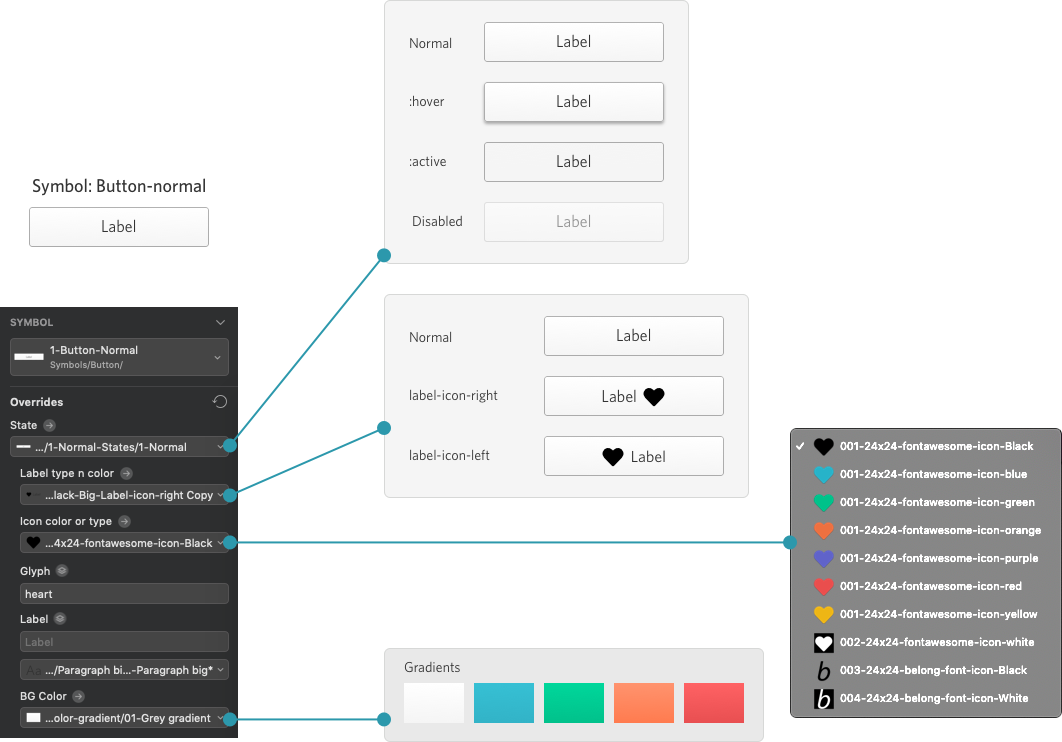Belong Hire is the B2B SAAS product from Belong that is created to enable company recruiter to do hiring in a candidate driven future of hiring. This is the main product offering from Belong and I have been directly and indirectly involved as Head of Design in how it has been built from scratch in the past 4 years. This is my description of how we defined the problem and approached it as a team of Product, Design and Tech. It would be impractical to cover all of what we have done as a product team to build Belong Hire in the past 4+ years. I’ve covered some selected areas and qualitatively talked about them just to give you a glimpse into our thought process as a Product Team.
We at Belong believe that the future of recruitment is Outbound Hiring.
Outbound Hiring is a targeted, candidate-focused approach that coordinates personalized talent acquisition and business efforts to hire people who succeed in your company.
We achieve this by breaking the steps involved in achieving the goal in the following manner.
A good journey towards discovering the right candidates starts by defining what you are trying to find in the right way. We believe JD is a terrible way to describe the role you are hiring for. We call our better alternative, the Opportunity Profile (OP).
Opportunity Profile, if done right is a huge and complex set of information about a role. Here’s the Opportunity Profile we use to hire UX Designers for Belong.
The challenge for the Product, Design and Technology team was to figure out a simple implementation of this concept in the product.
The simplified version of OP that we use in the Belong Hire product is called the “Ideal Candidate”, made possible by our Data Science team. Configuring the search functionality in the product to find relevant candidate became a simple matter of providing the Ideal Candidate to the system.
The Profile of a candidate
The next phase in Discovering the right candidate is the ability to identify one when you see one. Product, Design and Tech ended up putting together some clever stuffs to pull this off.
We used a mix of clever information highlighting, grouping and insight generation to make decision making faster and easier. It took us a full format Design Sprint for us to get to where we are today.
Engage
Once you’ve identified a potential candidate, the next step is to engage with the candidate to start the process of discovering if the candidate would Belong in the role. Remember that these are cold emails and would very likely be ignored.
We figured out that highly personalized context-aware emails does the job of getting candidate interest very well, and Belong Hire as a product does exactly that in a completely automated way. From those early days where each email was written completely manually, Product, Design and Tech has taken Belong to a point where we have a platform that can automatically send out thousands of highly personalized emails with context awareness on a daily basis. We do this both for the first time when we reach out to a candidate and also when a candidate is re-engaged later, in which case we included the previous context too. All of this resulted in complex challenges for the Product and Design team to iteratively and incrementally launch this capability over years of development.
One of the most interesting challenge for Design with this approach was to make sure that the entire process which is now completely automated, is transparent and visible through the product. This became very important for users to appreciate the value it was creating.
We also did a lot of seemingly small stuffs which created huge impacts. Here’s an article written by our Product Manager just to communicate the importance of proper email signature to our users. This was also our way of introducing them to the product feature we shipped to help them with that.
Candidate Experience
Another component that is at the core of our philosophy at Belong is
“Candidate Experience”
Make sure that the Candidate Experience is great and everything else will follow. This guided a lot of our Product road map, Design decisions and Tech execution.
Reaching out to the wrong candidate gives bad candidate experience.” The matchmaking/search has to be perfect, both in Design and the underlying tech.
“Delay in response and acknowledgement of email gives bad candidate experience.” Automate the process to the extent technology allows and improve it incrementally. Enable recruiters to prioritize effectively and work efficiently.
Lack of transparency during the hiring process gives bad candidate experience.” We felt solving this was so important, we built one of the core feature of our product offering around this. We call it the Hiring Journey. It’s a journey and the experience matters. You can read more about the thought behind it in the article below.
Recruiting Leaders – Have You Built a Candidate Journey Map Yet?
Like any sensible Designer, I tried this in our Designer hiring at Belong before developing this feature. Every candidate we interviewed would get a dedicated read-only Google Doc where they would get all updates from the hiring team. This doc also contains every single bit of information that you would need as part of the hiring process. This worked out great.
Conclusion
Those are some of the interesting stuffs we tackled while trying to solve the problem of
“Bringing the Right People together, for the Right Reason at the Right Time.”
There’s so much more to it, but this was a great start.
The Product Team













